|

|
ASPERGILLOSIS  (Slide study set # 9) * (Slide study set # 9) *
Aspergillosis is the most common respiratory mycotic disease of poultry.
Aspergillosis is defined as any disease condition caused by a member of
the fungal genus Aspergillus.
|
F. Merrill Ranck, Jr
1978
Revised by
Andrea M. Miles
1995 |
|

|
THE AVIAN CARDIOVASCULAR SYSTEM  (Slide study set # 25A) (Slide study set # 25A)
The avian heart differs from the mammalian heart in that it is cone-shaped,
has a thin right ventricle (RV) and thick left ventricular (LV) wall, with a thickness
ratio of 1:4. A muscular flap, rather than a mammalian valve, separates the
right atrium (RA)from the RV. This muscular flap is a continuation of muscle
from the right ventricular wall. Other valves are similar to those found in
the mammalian heart.
|

Richard J. Julian
2010
|
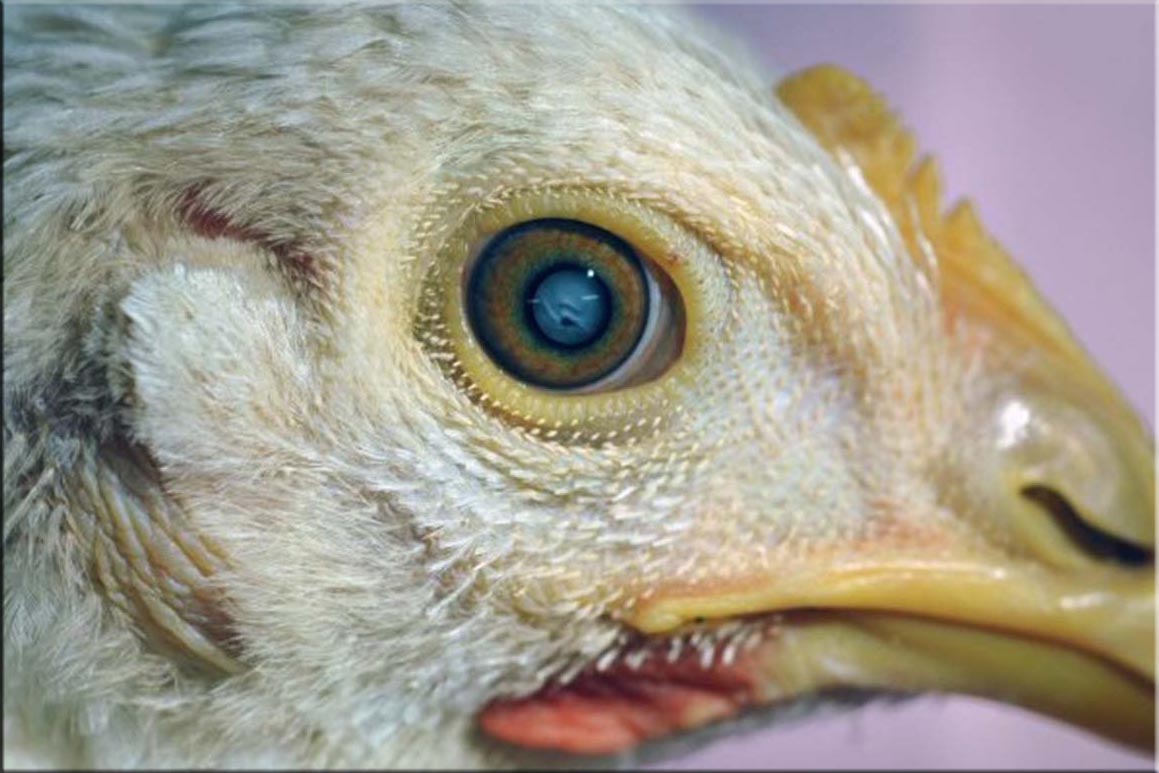 |
AVIAN ENCEPHALOMYELITIS (Slide study set # 5A) (Slide study set # 5A)
Avian encephalomyelitis (AE) is an infectious viral disease of young
(1 to 3 week old)chickens, turkeys, pheasants, and quail. The causative
virus is a member of the Picornaviridae family. Older chickens may have
cataracts as a consequence of AE infection.Susceptible laying hens can
have reduction in egg production and hatchability. Because the virus
can be transmitted through the egg, immunization of hens is critical
for control of this disease.
|

O. J. Fletcher
T. Abdul-Aziz
2011
|
 |
AVIAN INFECTIOUS BRONCHITIS 
Infectious bronchitis is a highly contagious upper-respiratory tract disease caused by the avian coronavirus infectious bronchitis virus (IBV)
|
B. S. Ladman
M. W. Jackwood
2018
|
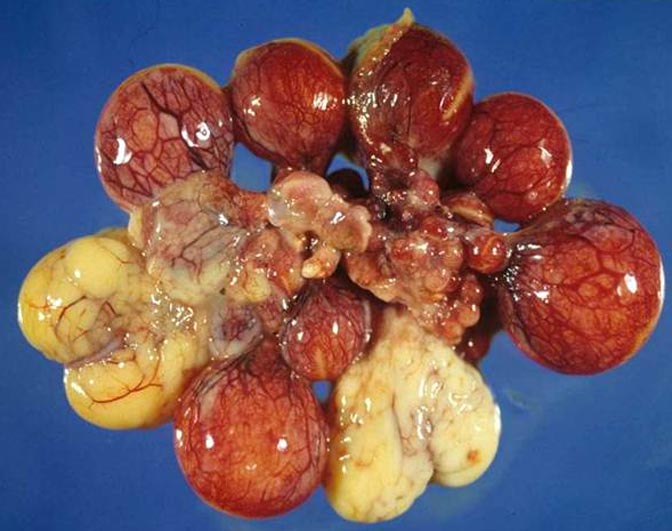 |
AVIAN INFLUENZA  (Slide study set # 31) (Slide study set # 31)
AI is an infections, viral disease of birds caused by several subtypes of the type A
strain of the influenza virus. The virus occurs natuarally among waterfowl and
shorebirds which remain asymtomatic but may transmit the virus to domestic
poultry such as chickens, turkeys, and ducks.
|

N. L. Tablanta
H. L. Shivaprasad
2011
|
 |
AVIAN POX  (Slide study set # 16) * (Slide study set # 16) *
Avian poxviruses--fowl, pigeon, turkey, canary, junco, quail, sparrow, and
psittacine poxviruses--are members of the genus Avipoxvirus of the
Poxviridae family. Fowl poxvirus is the type species of the genus. Because
of similar clinical manifestation in different avian species, only fowl pox is
described here.
|

D. N. Tripathy
1986
|
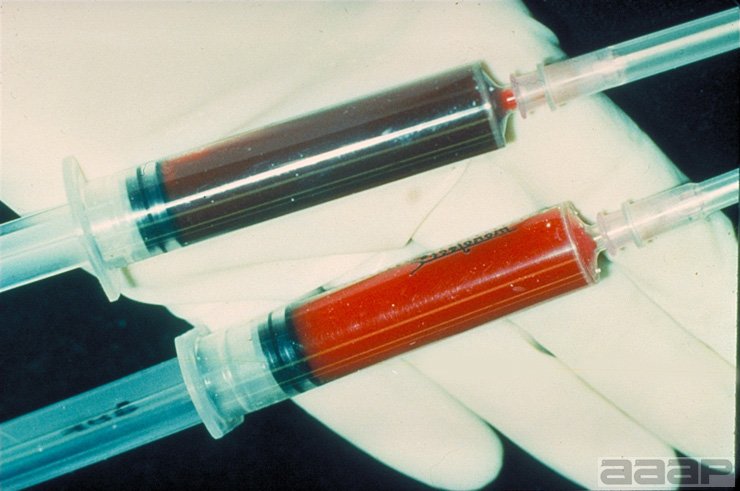 |
CHICKEN INFECTIOUS ANEMIA  (Slide study set # 20) * (Slide study set # 20) *
Chicken infectious anemia (CIA) is a disease characterized by aplastic anemia,
generalized lymphoid depletion, subcutaneous and intramuscular hemorrhages,
and immunodepression. Because of the immunodepression, increased mortality
due to secondary complications is often observed.
|

J. A. Smyth
H. L. Shivaprasad
K. A. Schat
2018
|
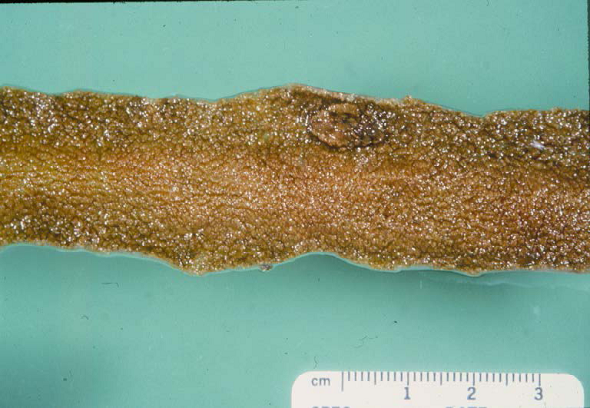 |
CLOSTRIDIAL DISEASES  (Slide study set #34) (Slide study set #34)
Clostridia are spore-forming Gram positive bacilli that can cause
various diseases with different clinical signs in poultry, ratites, psittacines,
waterfowl, and wild birds. Many Clostridia can be found normally in the soil
and in the gastrointestinal tract of many animals. All Clostridia produce a
vast array of exotoxins.
|

H. L. Shivaprasad
N. L. Tablante
2013
|
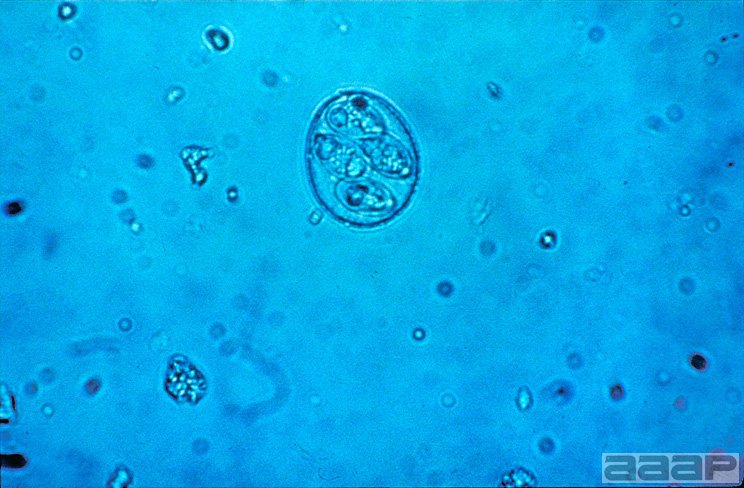 |
COCCIDIOSIS IN CHICKENS AND TURKEYS  (Slide study set # 7) * (Slide study set # 7) *
The coccidia are in the phylum Apicomplexa and may be grouped into
numerousgenera consisting of more than a thousand species;
however, this discussion will berestricted to the genus Eimeria,
which infects chickens and turkeys.
|

Kevin L. Watkins
Ken Opengart
1997
|
|

|
DIFFERENTIAL DIAGNOSIS OF LYMPHOID AND MYELOID TUMORS
IN THE CHICKEN  (Slide study set # 27) (Slide study set # 27)
This documentation and slide study set is to provide a conceptual basis for the
differential diagnosis of lymphoid and myeloid tumors in chickens and may also
serve as a teaching aid. It is directed primarily to the academician although
students and field veterinarians should also find the information useful.
No attempt is made to illustrate all lesions associated with tumor virus infection
in chickens as this is considered in other slide sets.
|

R. L. Witter
I. M. Gimeno
A. M. Fadly
2005
|
 |
EMERGING AND EPIDEMIC DISEASES OF WILD BIRDS 
(Slide study set # 28)
While most of the American Association of Avian Pathologists study sets are
devoted to descriptions of disease conditions in domestic poultry, this study
set will describe diseases of wild birds. Diseases of wild birds are important not
only in their relation to the health of wild bird populations, but also because
they represent important endemic infectious agents which pose threats to
both poultry and in some cases human health.
|

Scott D. Fitzgerald
John R. Fisher
Nicole L. Gottdenker
2007
|
 |
FOWL CHOLERA  (Slide study set # 19) * (Slide study set # 19) *
Fowl cholera is a septicemic disease caused by Pasteurella multocida which
affects a variety of domesticated and wild birds. This highly contagious
disease causes high morbidity and mortality resulting in great economic
losses, especially in large industrial-type poultry complexes. It usually
occurs as an acute disease, but chronic infections can also occur in
some outbreaks.
|

G. E. Onet
H. L. Shivaprasad
1995 |
|
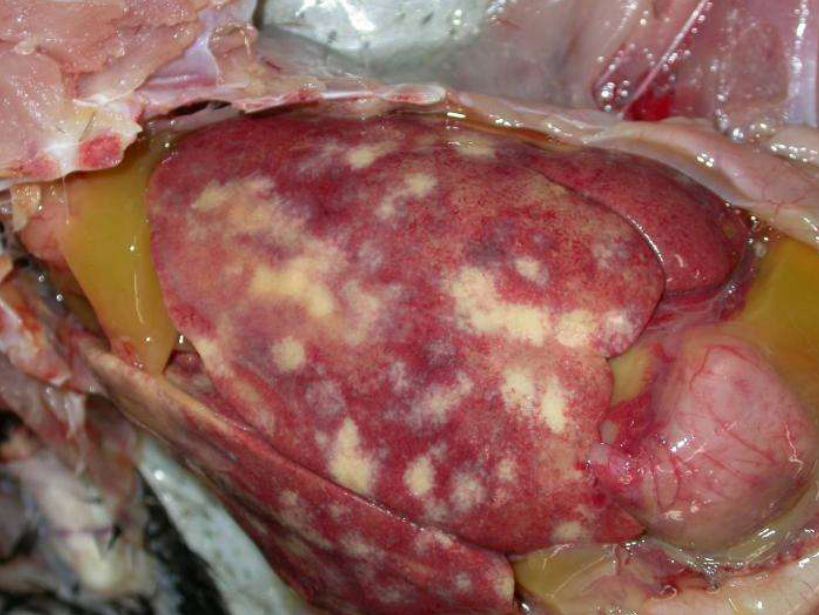 |
HISTOMONIASIS  (Slide Study set # 33) (Slide Study set # 33)
Histomoniasis is a protozoan disease caused by the parasitic protozoan Histomonas meleagridis. The disease has a worldwide distribution.
|

Tahseen Abdul-Aziz
L. R. McDougald
H. John Barnes 2012
|
 |
GROSS LESIONS OF VELOGENIC VISCEROTROPIC
NEWCASTLE DISEASE  (Slide study set # 4) * (Slide study set # 4) *
These slides show the lesions most commonly observed in chickens
that die ofvelogenic viscerotropic Newcastle disease (VVND). Not all
of the lesions described in this report are present in all or even a
large percentage of chickens.
|

C. W. Beard
1973
|
 |
INCLUSION BODY HEPATITIS OF CHICKENS  (Slide study set # 2) * (Slide study set # 2) *
IBHC appears to be an emerging disease, this program was prepared as
a summary of current knowledge which hopefully will provide useful
guidelinesfor the diagnostician
|

John El-Atrache
Pedro Villegas
2018
|
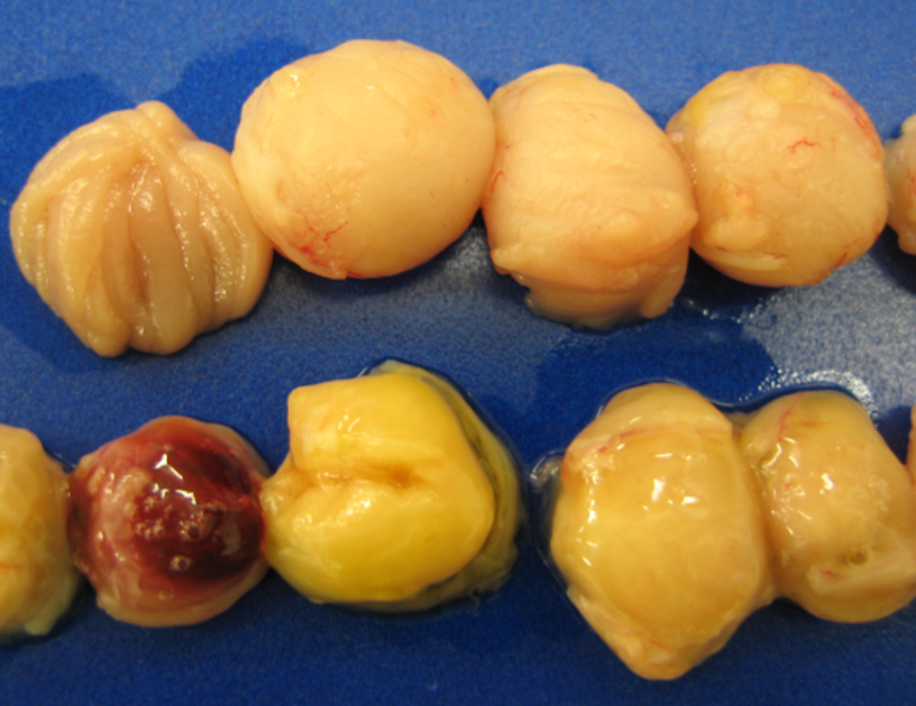 |
INFECTIOUS BURSAL DISEASE  (Slide study set # 14A) * (Slide study set # 14A) *
Infectious bursal disease (IBD) is an acute viral infection of young chickens that
affects the lymphoid tissue particularly the bursa of Fabricius.
|

Silke Rautenschlein
Egbert Mundt
2015
|
|
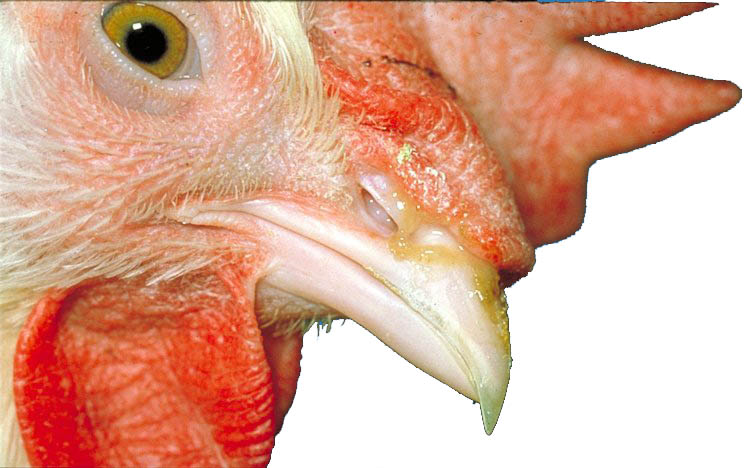
|
INFECTIOUS CORYZA  (Slide study set # 10) * (Slide study set # 10) *
Infectious coryza of chickens is an acute respiratory disease caused by
Haemophilus paragallinarum. The disease occurs in poultry raising areas
throughout the world.
|

R. B. Rimler
R. B. Davis
1983
|
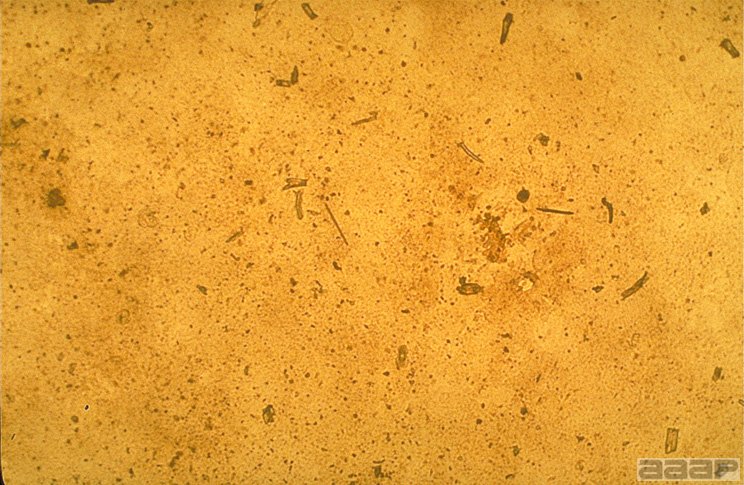 |
INFECTIOUS LARYNGOTRACHEITIS  (Slide study set # 15A) (Slide study set # 15A)
Laryngotracheitis (LT) is an acute viral respiratory disease primarily of chickens.
Economic losses attributable to LT are increasingly important in many poultry
producing areas throughout the United States and the world.
|

Tahseen Abdul-Aziz
James S. Guy
H. John Barnes
2011
|
 |
MARBLE SPLEEN DISEASE OF RING-NECKED PHEASANTS 
(Slide study set # 17) *
Marble spleen disease (MSD) is a contagious disease of confinement-raised
pheasants. It has been a significant cause of mortality in many areas of the
United States, Canada, and Europe during the last 30 years. Marble spleen
disease is caused by a type II avian adenovirus.
|

S. D. Fitzgerald
W. M. Reed
1992
|
 |
MAREK'S DISEASE  (Slide study set # 26) (Slide study set # 26)
Marek’s disease virus (MDV) is able to induce a variety of syndromes and
pathological manifestation in chickens. Because of its economic impact, the
development of lymphomas in nerves and viscera is the pathological feature
that has received the greatest attention. Nonetheless, there are other syndromes
associated with the replication of MDV such as transient paralysis (TP), and
lymphodegenerative syndromes, that occur independently of the development
of lymphomas and are also addressed in this slide set.
|

Isabel M. Gimeno
Richard L. Witter
Andrea Miles
2005 |
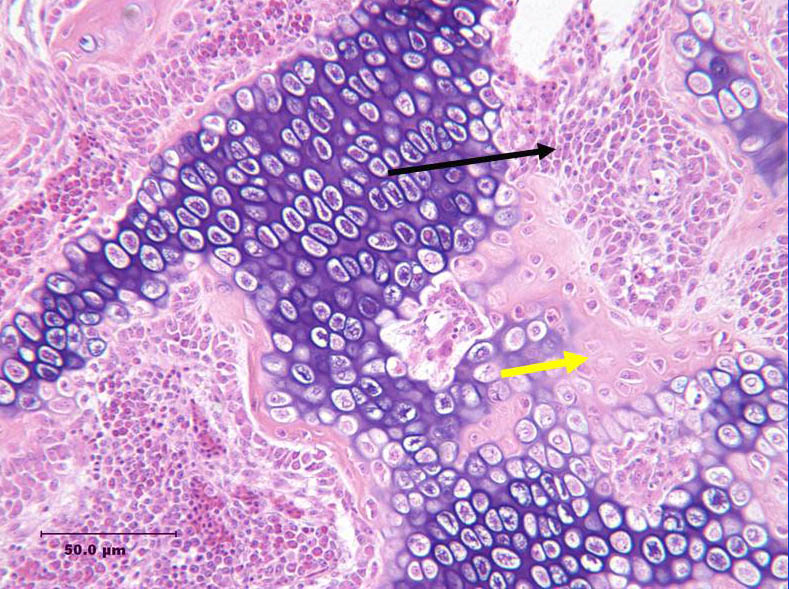 |
MUSCULOSKELETAL DISORDERS CAUSING LAMENESS IN
CHICKENS AND TURKEYS  (Slide study set # 30) (Slide study set # 30)
Many peculiarities of the avian skeleton are related to flight. Other differences are
related to egg production. Many avian bones are hollow and contain air sacs. Air
sacs in bones make bones lighter but are of significance because air sacculitis
can result in osteomyelitis, arthritis and synovitis.
|

Richard J. Julian
2010
|
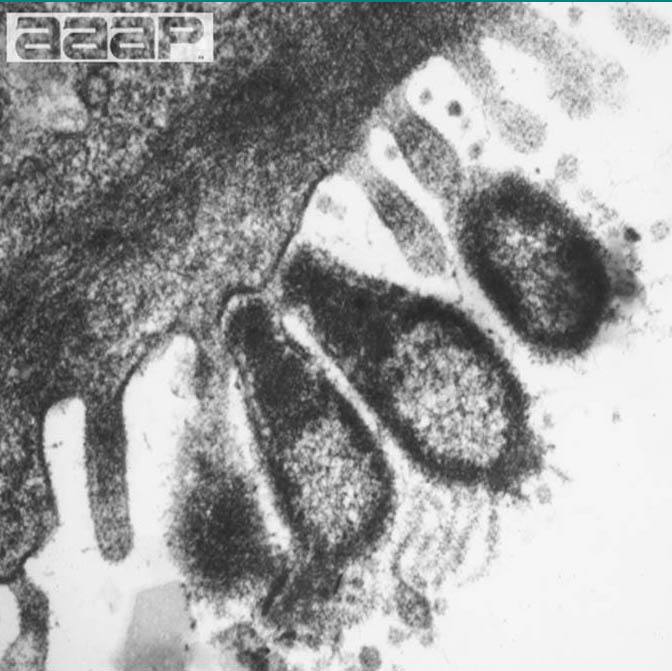 |
MYCOPLASMA GALLISEPTICUM INFECTION  (Slide study set # 29) (Slide study set # 29)
Mycoplasmas are very small bacteria that lack a cell wall and have a very small
genome. They are therefore resistant to antibiotics that act by inhibiting cell
wall synthesis, require a rich growth medium, and are more labile to inactivation
by environmental factors than are the more resistant typical bacteria with cell
walls, such as E. coli. Recent information, however, suggests that Mycoplasma
gallisepticum (MG) cells survive longer outside the host than has been
previously believed.
|

S. H. Kleven
O. J. Fletcher
2007 |
 |
MYCOPLASMA MELEAGRIDIS INFECTION  (Slide study set # 13) * (Slide study set # 13) *
Mycoplasma meleagridis (MM) was first isolated in 1958 from turkey poults with
air-sac lesions. Being antigenically distinct from M. gallisepticum, which was the
mycoplasma of primary concern in turkeys at that time, the new serotype was
named "Nstrain." Since then, the organism has been classified into the
H-serotype and given the present species name.
|

Richard Yamamoto
Herrad B. Ortmayer
Y. M. Saif
1983 |
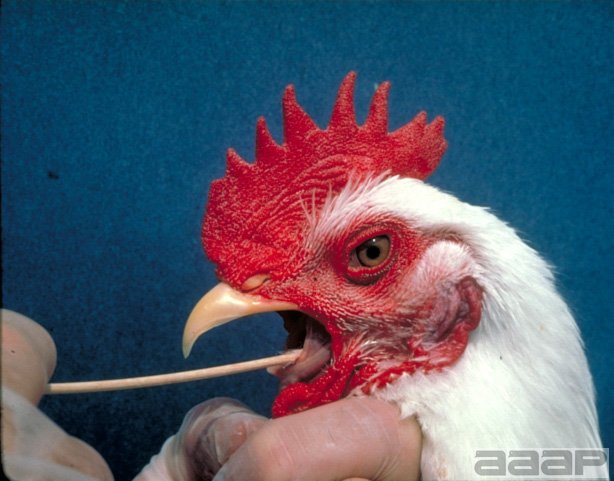 |
MYCOPLASMA SYNOVIAE INFECTION  (Slide study set # 12) (Slide study set # 12)
Mycoplasma synoviae(MS) is a pathogen of chickens and turkeys, causing
significant economic losses to poultry producers worldwide. Infection
can be associated with upper respiratory disease, airsacculitis, synovitis,
tenosynovitis, and bursitis. Disease severity has been influenced by other
respiratory pathogens (e.g., Newcastle disease virus, infectious
bronchitis virus), more virulent MS strains, and host species predilection
(turkeys more susceptible than chickens).
|

Ziv Raviv
David H. Ley
2012
|
 |
NECROTIC ENTERITIS  (Slide study set # 32) (Slide study set # 32)
Necrotic enteritis (NE) is an enteric bacterial disease of chickens,
turkeys, and a few other avian species caused by Clostridium perfringens.
The disease is characterized by damage to the intestinal mucosa by toxins
produced by the causative bacteria. It occurs worldwide and causes
considerable financial losses to broiler producers due to mortality,
treatment cost, and, in its milder subclinical form, poor growth and
feed utilization. The disease was first reported in chickens in 1961.
|

Tahseen Abdul-Aziz
H. John Barnes
2012
|
 |
PULLORUM DISEASE AND FOWL TYPHOID  (Slide study set # 22) * (Slide study set # 22) *
Pullorum disease (PD) and fowl typhoid (FT) are highly infectious and contagious
diseases of poultry first described in 1900 and 1888, respectively. Losses from
PD and FT were so severe that they once impaired the expansion of the poultry
industry. Currently, reports of FT in the U.S. are rare.
|

H. L. Shivaprasad
R. P. Chin
1996
|
 |
RNA TUMOR VIRUSES  (Slide study set # 27A) (Slide study set # 27A)
Avian tumor viruses include Marek’s disease virus (MDV), reticuloendotheliosis
virus (REV) and the avian leukosis sarcoma group of retroviruses (ALSV).
MDV is a herpesvirus, and REV and ALSV are retroviruses unrelated to each
other. All avian retroviruses of economic significance are classified within the
family Retroviridae, subfamily Orthoretrovirinae.
|

Guillermo Zavala
2009
|
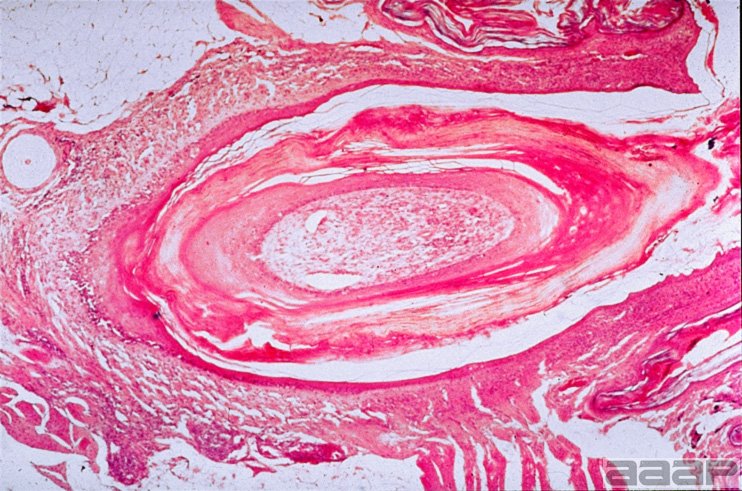 |
SYSTEMIC VIRAL DISEASES OF PET BIRDS  (Slide study set # 21) * (Slide study set # 21) *
The purpose of this slide study set is to review several of the important systemic
viral diseases which are unique to pet birds. Three important systemic viruses
which are unique to pet birds will be described: herpesvirus (Pacheco's disease),
circovirus (psittacine beak and feather disease), and polyomavirus (budgerigar
fledgling disease).
|

S. D. Fitzgerald
W. M. Reed
1995 |
 |
VIRAL ARTHRITIS  (Slide study set # 1) * (Slide study set # 1) *
Viral arthritis is an infectious disease of chickens and turkeys, affecting
primarily the synovial membrane and tendon sheaths, caused by a reovirus. |

N. O. Olson
1975
Revised by
G. E. Onet
1994
Revised by
Holly S. Sellers
2018
|
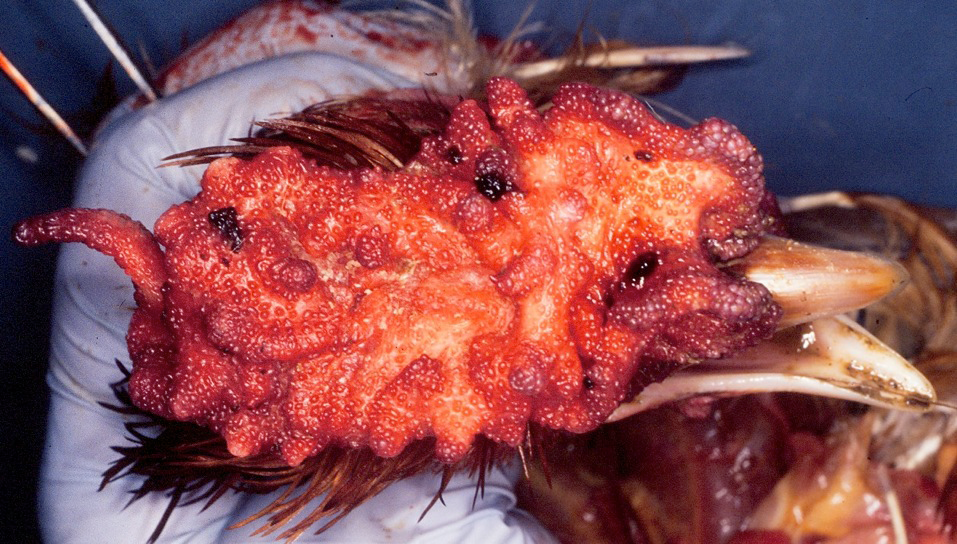 |
AN OVERVIEW OF EXOTIC NEWCASTLE DISEASE  (Slide study set #35) (Slide study set #35)
Exotic Newcastle disease is a highly contagious acute viral disease of most
(if not all) species of birds. Often called "Exotic ND" or "END" in the USA
because virulent strains are not endemic in USA poultry.
|

H. L. Shivaprasad
R. Crespo
2013
|
 |
SYSTEMIC DISEASES OF WATERFOWL  (Slide study set #36) (Slide study set #36)
The waterfowl disease slide study set gives an overview of the most
common diseases affecting waterfowl. The term waterfowl encompass
members of the family Anatidae and includes ducks, geese and swans.
|

Simone T. Stoute
Peter R. Woolcock
2015
|





























